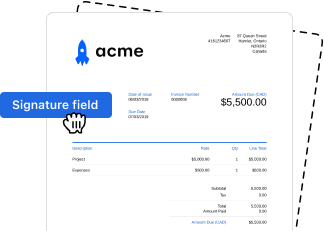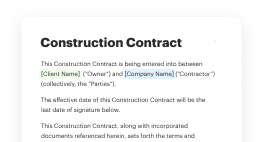Electronic Signature Lawfulness for Christmas Bonus Letter in European Union
- Quick to start
- Easy-to-use
- 24/7 support
Simplified document journeys for small teams and individuals




We spread the word about digital transformation
Why choose airSlate SignNow
-
Free 7-day trial. Choose the plan you need and try it risk-free.
-
Honest pricing for full-featured plans. airSlate SignNow offers subscription plans with no overages or hidden fees at renewal.
-
Enterprise-grade security. airSlate SignNow helps you comply with global security standards.







Your complete how-to guide - electronic signature lawfulness for christmas bonus letter in european union
Electronic Signature Lawfulness for Christmas Bonus Letter in European Union
When sending out Christmas bonus letters in the European Union, it is essential to ensure the electronic signatures comply with all legal requirements to avoid any issues. By following the steps below using airSlate SignNow, you can guarantee the validity of your electronic signatures for your Christmas bonus letters.
User Flow for Ensuring Lawful Electronic Signatures:
- Launch the airSlate SignNow web page in your browser.
- Sign up for a free trial or log in.
- Upload a document you want to sign or send for signing.
- If you're going to reuse your document later, turn it into a template.
- Open your file and make edits: add fillable fields or insert information.
- Sign your document and add signature fields for the recipients.
- Click Continue to set up and send an eSignature invite.
airSlate SignNow empowers businesses with an easy-to-use, cost-effective solution for sending and eSigning documents. It offers great ROI with a rich feature set, is tailored for SMBs and Mid-Market businesses, provides transparent pricing without hidden fees, and offers superior 24/7 support for all paid plans.
Experience the benefits of airSlate SignNow today and streamline your document workflows with ease.
How it works
Rate your experience
What is the electronic signature lawfulness for Christmas bonus letter in European Union
The electronic signature lawfulness for a Christmas bonus letter in the European Union is governed by the eIDAS Regulation, which establishes a framework for electronic signatures. This regulation ensures that electronic signatures are legally recognized across member states, providing the same legal standing as handwritten signatures. For a Christmas bonus letter, this means that employers can use electronic signatures to authenticate the document, ensuring that it is valid and enforceable. The lawfulness of these signatures depends on the type of electronic signature used, ranging from simple to advanced and qualified signatures, each offering different levels of security and verification.
How to use the electronic signature lawfulness for Christmas bonus letter in European Union
To utilize the electronic signature lawfulness for a Christmas bonus letter, employers can follow a straightforward process. First, draft the bonus letter, ensuring it includes all necessary details such as the bonus amount and recipient information. Next, upload the document to an electronic signature platform like airSlate SignNow. After uploading, you can add signature fields where needed. Once the document is prepared, send it to the employee for their eSignature. The employee can review the letter, sign it electronically, and return it securely. This process streamlines documentation and ensures compliance with legal standards.
Steps to complete the electronic signature lawfulness for Christmas bonus letter in European Union
Completing the electronic signature lawfulness for a Christmas bonus letter involves several key steps:
- Draft the Christmas bonus letter, including all relevant details.
- Log into your airSlate SignNow account and upload the document.
- Add signature fields for both the employer and employee.
- Send the document for signature to the employee's email.
- The employee reviews the document and signs it electronically.
- Once signed, both parties receive a copy of the completed document.
This process ensures that the document is legally binding and securely stored.
Legal use of the electronic signature lawfulness for Christmas bonus letter in European Union
The legal use of electronic signatures for a Christmas bonus letter in the European Union is supported by the eIDAS Regulation, which outlines the conditions under which electronic signatures are valid. Employers must ensure that the electronic signature method used complies with the regulations to guarantee its enforceability. This includes using a secure platform like airSlate SignNow that meets the necessary security standards. By adhering to these legal guidelines, employers can confidently issue Christmas bonus letters that are recognized as valid and binding across EU member states.
Security & Compliance Guidelines
When using electronic signatures for a Christmas bonus letter, it is essential to follow security and compliance guidelines to protect sensitive information. Employers should ensure that the electronic signature platform, such as airSlate SignNow, employs encryption and secure authentication methods. Additionally, maintaining an audit trail of the signing process is crucial for compliance purposes. This audit trail provides a record of who signed the document, when it was signed, and any changes made. By following these guidelines, employers can safeguard their documents and adhere to legal requirements.
Examples of using the electronic signature lawfulness for Christmas bonus letter in European Union
Employers across various industries can effectively use electronic signatures for Christmas bonus letters. For instance, a retail company can issue bonus letters to seasonal employees, ensuring quick processing during the busy holiday season. Similarly, a tech firm can send digital bonus letters to remote employees, facilitating a seamless signing experience. These examples illustrate how electronic signatures streamline the process, making it more efficient and accessible for both employers and employees while maintaining legal compliance.
-
Best ROI. Our customers achieve an average 7x ROI within the first six months.
-
Scales with your use cases. From SMBs to mid-market, airSlate SignNow delivers results for businesses of all sizes.
-
Intuitive UI and API. Sign and send documents from your apps in minutes.
FAQs
-
What is the electronic signature lawfulness for Christmas bonus letter in the European Union?
The electronic signature lawfulness for Christmas bonus letter in the European Union is governed by the eIDAS Regulation, which recognizes electronic signatures as legally binding. This means that businesses can confidently use electronic signatures for Christmas bonus letters, ensuring compliance with EU laws. By utilizing airSlate SignNow, you can streamline this process while adhering to legal requirements.
-
How does airSlate SignNow ensure compliance with electronic signature lawfulness for Christmas bonus letters?
airSlate SignNow is designed to comply with the electronic signature lawfulness for Christmas bonus letters in the European Union. Our platform uses advanced security measures and encryption to protect your documents, ensuring they meet legal standards. This allows businesses to send and eSign Christmas bonus letters with confidence.
-
What features does airSlate SignNow offer for managing electronic signatures?
airSlate SignNow offers a range of features that enhance the electronic signature lawfulness for Christmas bonus letters in the European Union. These include customizable templates, real-time tracking, and secure storage. Our user-friendly interface makes it easy for businesses to manage their signing processes efficiently.
-
Is there a cost associated with using airSlate SignNow for electronic signatures?
Yes, there is a cost associated with using airSlate SignNow, but it is a cost-effective solution for ensuring electronic signature lawfulness for Christmas bonus letters in the European Union. We offer various pricing plans to suit different business needs, allowing you to choose the best option for your budget. Investing in our service can save time and resources in the long run.
-
Can airSlate SignNow integrate with other software for electronic signature management?
Absolutely! airSlate SignNow offers seamless integrations with various software applications, enhancing the electronic signature lawfulness for Christmas bonus letters in the European Union. Whether you use CRM systems, document management tools, or other business applications, our platform can easily connect to streamline your workflow.
-
What are the benefits of using electronic signatures for Christmas bonus letters?
Using electronic signatures for Christmas bonus letters provides numerous benefits, including increased efficiency, reduced paper usage, and enhanced security. The electronic signature lawfulness for Christmas bonus letters in the European Union ensures that these documents are legally binding. With airSlate SignNow, you can simplify the signing process and improve overall productivity.
-
How secure is airSlate SignNow for electronic signatures?
Security is a top priority at airSlate SignNow. Our platform employs advanced encryption and security protocols to ensure the electronic signature lawfulness for Christmas bonus letters in the European Union. This means your documents are protected from unauthorized access, giving you peace of mind when sending sensitive information.




























